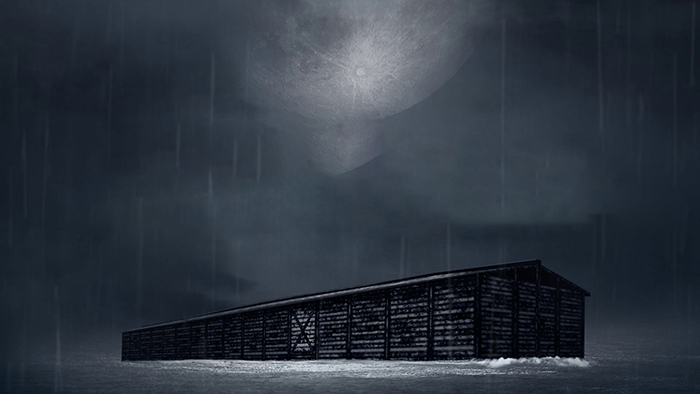
The movie Noah is best interpreted, I think, as a modern cinematic midrash on the Biblical tale. The midrashim—extremely popular in ancient Israel—were imaginative elaborations of the often-spare Scriptural narratives. They typically explored the psychological motivations of the major players in the stories and added creative plot lines, new characters, etc. In the midrashic manner, Darren Aronofsky’s film presents any number of extra-Biblical elements, including a conversation between Noah and his grandfather Methuselah, an army of angry men eager to force their way onto the ark, a kind of incense that lulls the animals to sleep on the ship, and most famously (or infamously), a race of fallen angels who have become incarnate as stone monsters. These latter characters are not really as fantastic or arbitrary as they might seem at first blush. Genesis tells us that the Noah story unfolds during the time of the Nephilim, a term that literally means “the fallen” and that is usually rendered as “giants.” Moreover, in the extra-Biblical book of Enoch, the Nephilimare called “the watchers,” a usage reflected in the great hymn “Ye Watchers and Ye Holy Ones.” In Aronofsky’s “Noah,” the stone giants are referred to by the same name.
What is most important is that this contemporary midrash successfully articulates the characteristically Biblical logic of the story of Noah. First, it speaks unambiguously of God: every major character refers to “the Creator.” Secondly, this Creator God is not presented as a distant force, nor is he blandly identified with Nature. Rather, he is personal, active, provident, and intimately involved in the affairs of the world that he has made. Thirdly, human beings are portrayed as fallen with their sin producing much of the suffering in the world. Genesis itself remains pretty down on the way human beings operate—read the stories of Cain and Abel and the Tower of Babel for the details. And “Noah’s” portrayal of the rape of nature caused by industrialization is nowhere near as vivid as Tolkien’s portrayal of the same theme in “The Lord of the Rings.” Fourthly, the hero of the film consistently eschews his own comfort and personal inclination and seeks to know and follow the will of God. At the emotional climax of the movie, Noah moves to kill his own granddaughters, convinced that it is God’s will that the human race be obliterated, but he relents when it becomes clear to him that God, in fact, wills for humanity to be renewed. What is significant is that Noah remains utterly focused throughout, not on his own freedom, but on the desire and purpose of God. God, creation, providence, sin, obedience, salvation.
There is a minor scene in the film that depicts some members of Noah’s family administering sleep-inducing smoke to the animals. They look, for all the world, like priests swinging thuribles of incense around a cathedral. I’m quite sure that this was far from the mind of the filmmakers, but it suggested to me the strong patristic theme that Noah’s Ark is symbolic of the Church. During a time of moral and spiritual chaos, when the primal watery chaos out of which God created the world returned with a vengeance, the Creator sent a rescue operation, a great boat on which a microcosm of God’s good order would be preserved. For the Church Fathers, this is precisely the purpose and meaning of the Church: to be a safe haven where, in the midst of a sinful world, God’s word is proclaimed, where God is properly worshipped, and where a rightly ordered humanity lives in justice and non-violence. Just as Noah’s Ark carried the seeds of a new creation, so the Church is meant to let out the life that it preserves for the renewal of the world.[1]
[1] Bishop Robert Barron review of the film “Noah,” April 2024.
